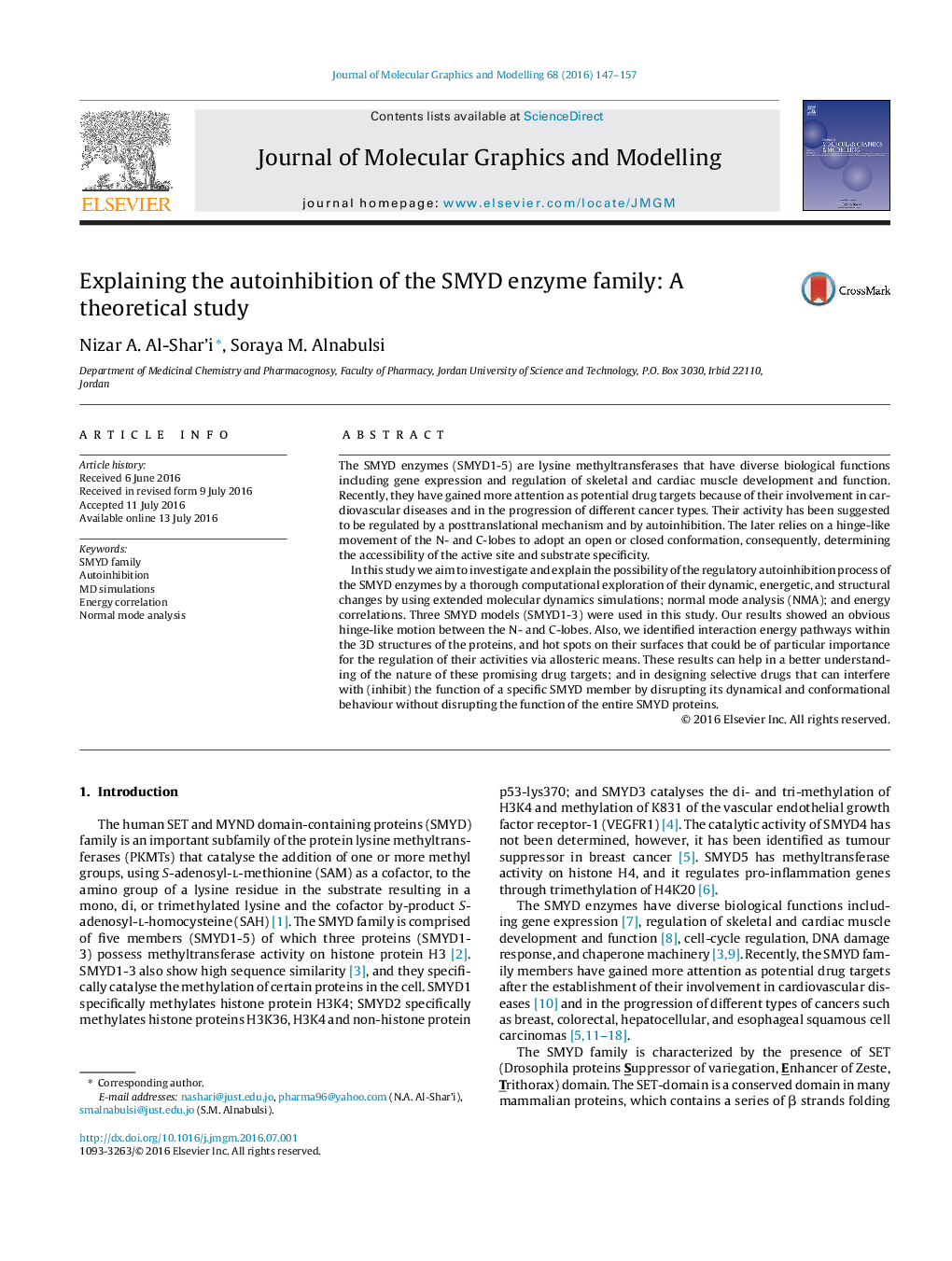| کد مقاله | کد نشریه | سال انتشار | مقاله انگلیسی | نسخه تمام متن |
|---|---|---|---|---|
| 443228 | 692690 | 2016 | 11 صفحه PDF | دانلود رایگان |
• The proposed regulatory autoinhibition mechanism of the SMYD enzyme family is proved.
• The autoinhibition mechanism relies on a hinge-like motion of the N- and C-lobes.
• MD simulations and normal mode analysis of SMYD1-3 proved hinge-like motion.
• Energy correlation analysis identified energy pathways within 3D structures.
• Selective drugs can be designed based on trapping the enzyme in an inactive form.
The SMYD enzymes (SMYD1-5) are lysine methyltransferases that have diverse biological functions including gene expression and regulation of skeletal and cardiac muscle development and function. Recently, they have gained more attention as potential drug targets because of their involvement in cardiovascular diseases and in the progression of different cancer types. Their activity has been suggested to be regulated by a posttranslational mechanism and by autoinhibition. The later relies on a hinge-like movement of the N- and C-lobes to adopt an open or closed conformation, consequently, determining the accessibility of the active site and substrate specificity.In this study we aim to investigate and explain the possibility of the regulatory autoinhibition process of the SMYD enzymes by a thorough computational exploration of their dynamic, energetic, and structural changes by using extended molecular dynamics simulations; normal mode analysis (NMA); and energy correlations. Three SMYD models (SMYD1-3) were used in this study. Our results showed an obvious hinge-like motion between the N- and C-lobes. Also, we identified interaction energy pathways within the 3D structures of the proteins, and hot spots on their surfaces that could be of particular importance for the regulation of their activities via allosteric means. These results can help in a better understanding of the nature of these promising drug targets; and in designing selective drugs that can interfere with (inhibit) the function of a specific SMYD member by disrupting its dynamical and conformational behaviour without disrupting the function of the entire SMYD proteins.
Figure optionsDownload high-quality image (199 K)Download as PowerPoint slide
Journal: Journal of Molecular Graphics and Modelling - Volume 68, July 2016, Pages 147–157
